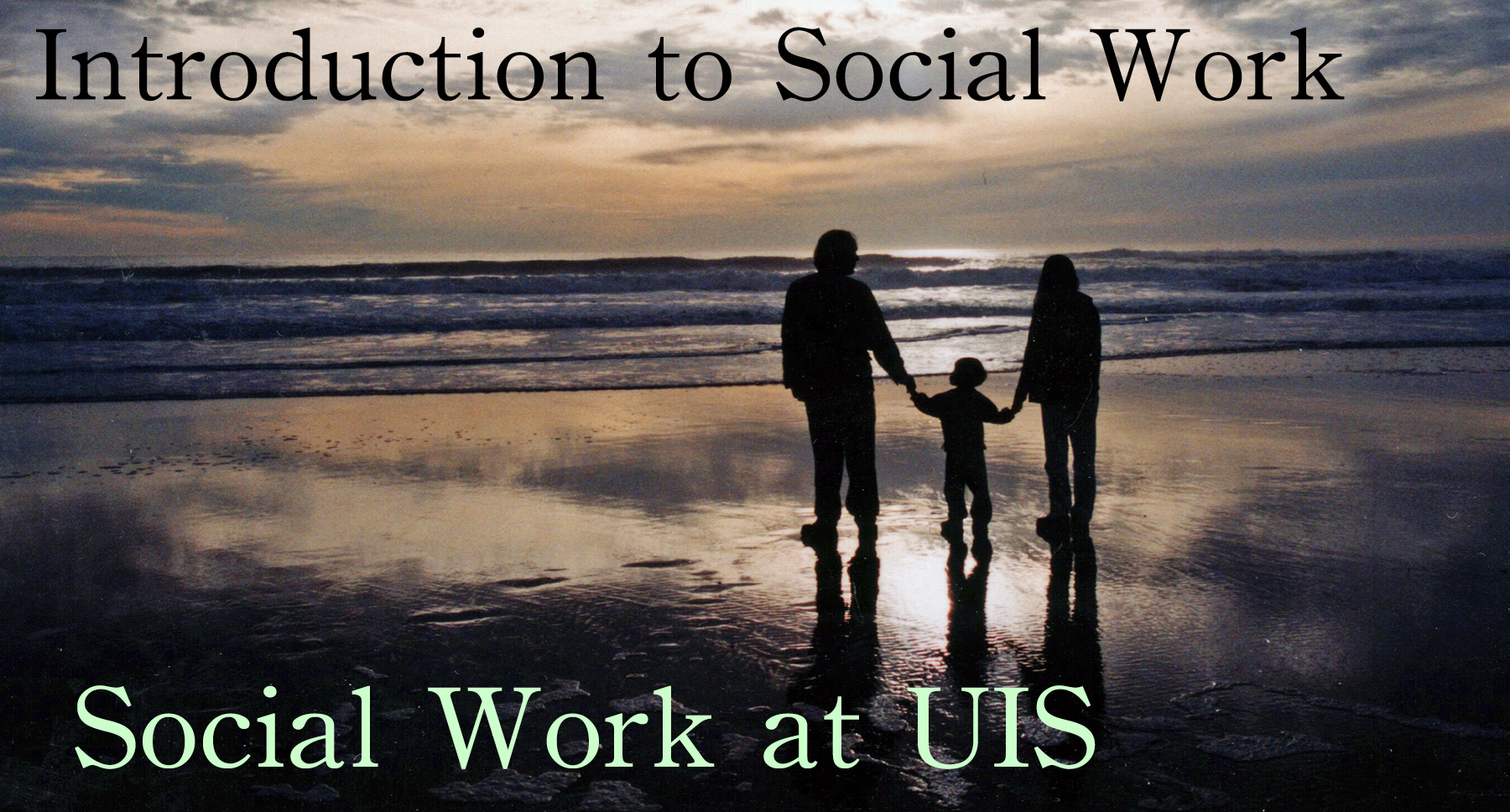Class meeting this week is on Zoom.
Class on Zoom begins March 9th at 2:00 pm and lasts until about 3:30 or 4:00 pm
Class session lasts from March 9th at 2:00pm to March 23rd at 1:59pm.
This page describes what you should do in this eighth session.
The eighth session of class begins with a Zoom/Classroom meeting in the Spring of 2022. This page is a guide to what you do after the Zoom meeting, before our class on March 23rd (which in Spring of 2022 is just on discussion boards, without any classroom meeting or Zoom meeting).
Objectives of this session
- Discuss race and racial issues in our society
- Understand some of the ideas about what social workers can do about racism and racial injustice
- Understand at a personal level how each of us is confronting the problem of racism in our society.
- Recognize that social work is a profession engaged in working to dismantle racism
- Understand the competencies social workers are supposed to gain through their training and field placements.
- Know the competencies of social work practice defined by the Council on Social Work Education
- Know some of the typical tasks of social workers who practice their profession in a school setting
Time Budget for 9 hours
2h 30m Class meeting on Zoom and time reading and posting in Canvas discussion board
45m If you are reading the Days in the Lives of Social Workers,
5th edition, we're reading about private practice this week. So, please read chapters 31 & 32, pages 229-238 (“Private Practice and the Eclectic Social Worker” and “An Office to Call My Own”). These are chapters 31 & 32 (pages 233-242) in Days in the Lives of Social Workers, 4th edition.
2h 10m Read papers written by your peers, and give feedback to them.
2h 5m Read chapters 6 through 8 (pages 85-134) in Why Are They Angry With Us?
1h 30m Watch and read the current events materials on race: Anti-racist Arguments are Tearing People Apart, The end of Wokeness?, Research says there are ways to reduce racial bias, “White Privilege: Unpacking the Invisible Knapsack”, “being Anti-Racist”, Microinterventions for maximum effect.(Those who identify as “conservative” must read the last four, those who do not must watch and read the first two)
What will happen in the class meeting at the start of this session?
During our class time at the beginning of this session, I expect to use time in the following ways:
- We will begin class with check-in, as always.
- We will make sure that everyone has at least one peer paper to read and edit and give feedback on. Everyone has been assigned to a group with three or four classmates for sharing papers.
- We will discuss the first four or five chapters in Why Are They Angry With Us?
- We will talk about the roles of social workers in schools.
- We will discuss competencies in social work, and what competencies social work students are supposed to gain.
What must you read this week?
If you are reading the Days in the Lives of Social Workers,
5th edition, we're reading about private practice this week. So, please read chapters 31 & 32, pages 229-238 (“Private Practice and the Eclectic Social Worker” and “An Office to Call My Own”). These are chapters 31 & 32 (pages 233-242) in Days in the Lives of Social Workers, 4th edition.
Read chapters 6 through 8 (pages 85-134) in Why Are They Angry With Us?
To explore topics of race and racism and anti-racism, I want you to watch and read two thoughtful critiques of anti-racism, and then also read and watch two thoughtful pieces advocating for stronger anti-racism. If you consider yourself conservative, you must read the three anti-racist assignments, and you are invited to watch and read the Loury/McWhorter and Friedersdorf materials. Everyone else must watch the McWhorter/Loury and read the Friedersdorf, and you are invited to also read the Lopez, the McIntosh, and the Natoinal Museum of African American History and Culture. I hope everyone will read and watch all of these, but if your time is limited, I want you to watch and read the articles that are most likely to challenge you by presenting ideas you may not agree with.
The critiques of antiracism I would prefer you to study (and if you do not consider yourself conservative, you must read/watch these) are:
1) Conor Friedersdorf’s article from the August 19th Atlantic Monthly website: Anti-racist Arguments are Tearing People Apart. (13m)
2) The September 1, 2020 Blogingheads.tv Glenn Loury & John McWhorter [The Glenn Show] The end of Wokeness? (1h 7m)
If you want to go into deeper into sort of criticism of anti-racism and wokeness, I will strongly recommend Bret Weinstein’s DarkHorse Podcast “Black Intellectual Roundtable” from July 13, 2020 or the July 23rd of episode of “The Dark Arts” bloggingheads.tv episode in which Glenn Loury & John McWhorter discuss anti-racism. There are many racist arguments against anti-racism, and many stupid arguments, (please don’t be impressed by people like Candice Owens), but for intelligent and well-informed and thoughtful critiques, I think Glenn Loury and John McWhorter are some of the more impressive citics, and John McWhorter is a sympathetic critic, which makes his objections more interesting as compared to someone who just has a conservative bias and an emotional distaste for radicalism or liberals in general.
I want you to read these advocacy pieces about anti-racism and microaggressions and so forth (persons who consider themselves conservatives must read these; it should take about 1h 20m to read all of these).
1) German Lopez. Research says there are ways to reduce racial bias. Calling people racist isn’t one of them. A July 30, 2018 essay in Vox.
2) The classic (1988) “White Privilege: Unpacking the Invisible Knapsack” by Peggy McIntosh. (just read McIntosh's part; not the whole collection of essays). I believe this is where “white privilege” became popularized, although of course people have recognized for centuries that the disadvantage of many brings benefits to a few.
3) The essay on “being Anti-Racist” by the National Museum of African American History and Culture (a Smithsonian Institute museum)
4) The Microinterventions for maximum effect “Small Works” graphic-novel-style strip by Sarah Lazarovic from yes!.
If you want to go deeper into this, or if you yourself may be engaged in anti-racism work, I want you to also watch and read these two pieces:
5) The August 4, 2019 editorial by Christina Torres “The Urgent Need for Anti-Racist Education” from Education Week.
6) Patricia G. Devine’s lecture on reducing implicit bias and prejudice given at the American Psychological Association’s 2015 Public Interest Leadership Conference (Youtube video of 30 minutes’ duration)
Work on your paper.
During this 8th week of the semester, you must read and give feedback on the two or three papers you have received from your peers. These were given to you in the sixth or seventh week of the semester. You will receive your feedback from your peers by the end of this week. Next week, on the ninth week of this semester you will be revising your draft based on what your peers tell you.
Please put a lot of time into this. Give feedback on grammer, organization, narrative, and so forth.
Activities
No special activities in the eigth week of the semester.
Working on your Assignments
You have one special assignment this week (in addition to working on your paper)
- Give feedback on the papers you receive from your classmates.
In 2021, the writing groups are as follows:
Azure Group: Meghan, Claudia, and Megan mburr4@uis.edu, cmika2@uis.edu, mmile4@uis.edu.
Rose Group: Jenna, Genevieve, and Madison jcisc3@uis.edu, groge2@uis.edu, mgilb6@uis.edu.
Gold Group: Ke'Shawna, Lazerric, and KiWanna kprim2@uis.edu, lhart9@uis.edu, kholm5@uis.edu.
Carnation Group: No one is assigned to this group
Sable Group: No one is assigned to this group, either
Discussion Questions this week
Here are the discussion questions. You should have time to answer a few of them, and also respond to some of your classmates. Remember to devote at least an hour to the discussion board participation, even if you attended the Zoom class meeting.
- Discussion Question 1:
Check in and tell us how you are doing. What is going on in your life? What adventures have you had last week, and what are you looking forward to in the coming week? How is school going for you?
- Discussion Question 2:
Before the 2020 elections, many were worried about election violence. A few polls showed that about half of Americans believed the people on the extremes of the side they were politically opposed to would probably engage in violence if they lost the elections. As it turned out, there was violence, but fewer than ten persons were killed, and damage to property was relatively minimal. Some organizations have tried to heal the political rift in America. But there are many problems with the way we conceive of political orientation. Self-described "moderates", for example, more often than not, do not hold moderate views. Media tend to attract audiences that come to hear reassuring news that supports their existing biases. Yet, it is a fact that there is a stronger ideological basis for party affiliation these days.
Most social workers tend toward the left in lots of political issues, but as a profession, we see the value of working with all sides, and our commitment to the ethics of client autonomy is easily shifted into the political realm where social workers are not always trying to argue and convert people over to our way of seeing the world. And, remember that there are many conservative social workers, including some leaders in the field. What role do you think social workers should take to help bring the country together, to promote civil discourse and collegial compromise among persons with different political views?
-
Discussion Question 3:
In creating social change, the standard argument is that activists must work on two fronts: one one front they must advocate among those who make laws, execute policies, or make interpretive decisions about the law; on the other front they must try to change the beliefs and values of a great mass of people, partly so those people will help change laws and governments (at least in societies with fair elections), but even more vitally because the ultimate aim often is to change the hearts and minds of the masses. Typically, activists try to change the values and thinking of the masses, and then once enough people see the world as the activists see it, it becomes possible to change laws or set up institutions to formalize the changed values of the society. But can it work the other way? Can you change laws and create institutions to reform society, and then have the general population widely adopt the new thinking or new behavior you are encouraging?
There are sometimes good examples of how outsiders have set up institutions and rules to guide groups of people toward some desired social outcome, but the culture or mentality of the persons in those groups made the foundations of those institutions very precarious, and the new rules were not wholeheartedly adopted. For one example, many Bosniaks, Croats, and Serbs adopted the solidarity and trans-ethnic unity advocated by the Yugoslavian government and indoctrinated through the Yugoslavian education system, but in the 1990s the world learned that the unity-building institutions had failed, and when Yugoslavia broke up, Serbs and Croats and Bosniaks fought each other in genocidal wars. Germany in 1919-1934 presents another example, where liberal democrats and moderate socialists set up the Weimar government in Germany after World War I, but after 15 years of trying to build a modern liberal and progressive democracy in Germany, all this work was smashed by the National Socialists when they came to power and established a totalitarian mind-control cult of genocide/war/death in Germany. Reconstruction and the military occupation of the states that had been in rebellion (and passage of the 14th Amendment and the Civil Rights Act of 1866) was another example, where a decade of work following the War Against the Rebellion of the Southern Slaveholders was incinerated in the rise of Jim Crow when Reconstruction ended.
And yet, Dr. Davis insists that laws “often” (not always) do change attitudes. He says this is because “if behavior is no longer biased, there is no longer a need to maintain prejudice.” In other words, if people are oppressing a minority group, and also feel prejudiced against the members of the oppressed minority group, that prejudice is probably rooted in psychological dynamics (avoiding the cognitive dissonance of recognizing that you are oppressing people, which good people should not do), and it likely to fade away or at least diminish if people stop oppressing that minority group, so if you change a law to eliminate the oppression, the prejudice will diminish as a result. Can you express this idea in your own words and give an example (a hypothetical example would be fine)? How convincing or unconvincing do you find this claim by Dr. Davis? What are the implications for our own work to create a more just and humane civilization?
- Discussion Question 4:
In the first chapter (after the Introduction, which I hope you read) we learn of Dr. Larry Davis's grandmother, Lola, and his grandfather, Clint, and his biological grandfather, Bill Whitney. Larry uses this chapter to give a historical context to race relations and the problem of racism, and also to highlight the reinforce the question of the title of the book: he concludes the chapter with the the accusations made by the man who murdered several African-Americans at a bible study class in Charleston, South Carolina (about African-Americans raping European-American women), yet his own mother’s birth was probably the result of either an blatant rape or else a pseudo-consensual act in which the inequalities in power made any “consent” given by his grandmother to Bill Whitney highly suspect. He hypothesizes that perhaps one motive for anger among some European-Americans is fear that the injustices committed by European-Americans generations ago have built up some sort of karmic debt that will embolden non-European-Americans to treat Europeans-Americans as their racist ancestors (such as Bill Whitney and the people who lynched Jesse Thornton) treated people with non-European heritage.
If it were true that there is a fear that “what goes around comes around” motivates some racism in American society today, and some people are especially hostile to persons with non-European heritage because they suspect that such persons will mistreat European-Americans in a mirror reflection of the atrocities committed by European-Americans against others between the 1600s and the 1960s, what would you expect to see? What phenomena would you detect? What would be characteristic of the rhetoric or expressed world-view of European-Americans who were motivated by the sort of fear related to the guilt of their ancestors and the concern that they might end up treated much as their ancestors had treated others?
Do you see any signs or evidence that could confirm Dr. Davis's suspicions? What signs or evidence would tend to make his conjecture seem more far-fetched?
-
Discussion Question 5:
Dr. Davis essentially answers the question posed in the title of his book in the second chapter, when he says that the desire to exploit and to preserve advantages (unfair advantages) lead some people to be angry against people they have harmed and treated unjustly. He describes how the theory of cognitive dissonance is they key insight to understanding this. Please share your own understanding of the answer to the question an African-American child might ask, "why are they so angry at us?" referring to the continuing hostility and social distance perpetuated by some European-Americans against African-Americans (and other persons with non-European heritage). Let's discuss the answer Dr. Davis found, and see whether it seems plausible to us.
-
Discussion Question 6:
In the chapter on internalized racism, Larry Davis writes that, “Blacks are, so to speak, in a constant struggle with Cooley’s looking-glass self—that is, a struggle to not perceive themselves as they perceive that others perceive them. To do this they must refute, counter, and reject internalizing the negative appraisals they receive daily from the larger society.” There is research supporting the idea that exposure to American society is injurious to the health of persons with dark skin; see the literature review under “Mental Health” in Szaflarski and Bauldry, (2019) for further references.
Given the fact that cultural racism and outright animosity against African-Americans is a significant element damaging their physical and mental health, doesn’t it follow that anti-racism efforts targeting personal prejudices must be part of our strategy to address health disparities? But on the other hand, since we know poverty and housing segregation (social isolation and school environments) cause many of the disparities, it would seem that ensuring Black Americans had higher incomes, greater wealth, and greater geographic distribution amongst the rest of the non-African-American population would solve many of the health disparities (especially access to care). Naturally, social workers try to address both the social justice (redistributing access, opportunity, wealth, and income so that African-Americans and American Indians have more) and human rights / psychological aspects of racism (helping everyone in our society recognize and struggle against prejudicial negative stereotypes, attitudes, and beliefs).
Given what you know, and what you are encountering in this memoir by Larry Davis, which do you think will be the more efficient and effective approach? That is, should we put our efforts at about 50/50 addressing systematic racism and inequality and social justice issues along with an equal attention to personal prejudices, old-fashioned racism, psychologically-rooted generalizations and assumptions, and micro-aggressions? Or, should we perhaps put our efforts 75%/25% in favor of the economic and structural issues such as access to employment, banks, goods schools, redistribution of resources and opportunities? Or, would it be better to put our efforts 25%.75% in favor of working on the psychological level to change attitudes and hearts, so that everyone valued African-American life a bit more, had fewer negative assumptions or fears about African-Americans, and generally felt as enthusiastically friendly and respectful of African-Americans as they do other groups in society?
-
Discussion Question 7:
Currently in the United States there are controversies quickening the hearts of Americans when it comes to the best way to create a society with justice for all.
On one side we have the Black Lives Matter movement, and people who want racial sensitivity training or diversity training, and talk of reparations, and a generally enthusiastic embrace of the idea that we need radical change to give us equality. We might use the term “woke” to describe the stronger stance on this side of the issue. This side usually considers racism to be the greatest (or at least one of the greatest) issues facing the United States and preventing our country from achieving its potential greatness.
Then, there is another group of persons who want to address the inequalities and injustices, and see that those exist, but disagree with the more radical approaches on various grounds (thinking those approaches aren’t very effective, or perhaps having ideological problems with such approaches). This second side emphasizes that racial relations in the United States are fairly good now, relative to the past, and believe that many problems identified as “racist” are actually based on other problems (rudeness, sadism, corruption, bad police, moral failure, the oppression of the poor, etc.) with racial discrimination or racism playing a role, but a relatively less important role than the woke or radical side claims.
Then, there is a third side, which acknowledges also that racism is wrong, and admits that it still exists, but holds that for the most part all the opportunities and pathways to success and flourishing life already exist for African-Americans. This third side is convinced that much of the harm suffered by African-Americans is rooted in a nihilistic self-hating popular culture within many African-American communities. This side sees causal factors such as immorality, a failure to honestly take responsibility, a reluctance to work hard, and other personal failings. Yes, racism does harm African-Americans, this third side says, but it does trivial harm compared to the greater harms suffered because of bad behavior, immorality, tolerance for harmful deviance, materialism, anti-intellectualism, and other afflictions that African-Americans could address in their own families and communities without resorting so often to blaming European-Americans or racists or the history of slavery and Jim Crow, or “the system” we have now.
There is a fourth side, which may include 5%-to-15% of the population, that is still actively racist, and thinks what we need is segregation—separate spaces for people of different races. Some of these people might admit that that they believe African-Americans are genetically inferior (but they would say they are not racist since “racist” now is a synonym for “evil” and people generally do not ever see themselves as evil). This fourth side might welcome a few African-Americans who are wealthy or share with them a religious faith or political opinions, but probably thinks that “there are some exceptional African-Americans who are decent and worthy of our respect, but most African-Americans are no good, and I don’t want to have anything to do with them, and they will never be any better than they are because they just don’t have the capacity to rise up and join us as superior human beings”.
No one is going to admit to being in this fourth side as I have described it, but the first three sides all have respectable places in American debate. We might describe the first three as ”radical/woke” and “traditional liberal / moderate” and “conservative / libertarian” when we wish to describe them. As you look at the radical-woke, the traditional-liberal-moderate, and the conservative-libertarian positions on race, what do you hear that resonates with your own soul and mind when you consider the American problem of racism?
What do each of these first three sides say that makes good sense to you? (If you can’t find anything good in one or two of the sides, that’s also fine to admit.) Note that I am not asking you to identify yourself as “belonging” to any one side. My understanding of my mentor Larry Davis is that he does not belong to any of the sides as I have described them (he might be characterized as 50% radical/woke, 35% liberal-moderate, and 15% conservative-libertarian if I had to guess).
What is your largest criticism of each of these three respectable sides? (If there is a side that you totally agree with and have no disagreements with, that's fine to admit as well.)
-
Discussion Question 8:
Use this thread for open discussion on Why are they Angry With Us? by Larry Davis. Ask questions. Share your favorite parts of the book. Criticize the aspects of the book you liked least. Tell us whether the book should continue being included as part of the course.
Interesting Stuff To Explore
In this section of the class session guide I enjoy sharing interesting web resources of additional and supplemental materials I think you might enjoy exploring on your own time. You are not expected or assigned to look at this material, but I offer it to support your curiosity.
While your instructor does not identify himself as “radical” or “woke” he does think that racism is one of the most significant problems in American society today, and thinks that it is practical and useful to examine all social problems with an analytical model that considers race and racism as important elements to any story about injustice or suffering. Here are some resources about racism that may be of interest to you:
- The classic work on racism is Gordon W. Allport’s The Nature of Prejudice, which is just as relevant and readable now as when it was first published in the same year as the Brown vs. Board of Education case in Kansas, is worth reading. Here is a PDF of a chapter from this enjoyable classic of social psychology.
- This article: Comparison of Cardiovascular Disease Risk Factors Among African Immigrants and African Americans: An Analysis of the 2010 to 2016 National Health Interview Surveys is just one of many sources demonstrating that American culture is toxic and poisonous (causes health problems) to persons with African ancestry (African-Americans, immigrants from the African diaspora, and African immigrants).
- Examining the Black-white wealth gap. A report from Kriston McIntosh, Emily Moss, Ryan Nunn, and Jay Shambaugh published by the Brookings Institute on February 27, 2020
- The “Eliminate Racism” Grand Challenge for Social Work
- A pdf of the significant 2006 paper by Hammond and Axelrod “The Evolution of Ethnocentrism” showing through game theory and mathematical models and simulations using game theory that some characteristics of ethnocentrism (favoring an in-group over members of out-groups) may arise naturally.
- A working paper in which my good friend Trina Shanks is a co-author: White Americans Have a Reason to Be Mad about Wealth Inequality
- The National Center for Race Amity (my favorite anti-racism group). Richard Thomas (an old friend and classmate of Larry Davis’s) was one of the founding members of this organization.
- 5 Big Ideas to Narrow the Racial Wealth Gap. By Jeff Kauflin and Janet Novack. Article in Forbes from June of 2020.
- Wealth and the Credit Health of Young Millennials (2019) by Signe-Mary McKernan, Caroline Ratcliffe, and Trina Shanks
- Homeownership and Living Arrangements among Millennials: New Sources of Wealth Inequality and What to Do about It (2019) by Jung Choi.
- The Millennial Racial Wealth Gap (2019) by Fenaba R. Addo and Yiling Zhang
- pdf of paper Stereotypes, Prejudice, and Depression The Integrated Perspective. (2012). William T. L. Cox, Lyn Y. Abramson, Patricia G. Devine, and Steven D. Hollon
- pdf of paper What works to reduce prejudice and discrimination? A review of the evidence. (2015). Maureen McBride, Scottish Centre for Crime and Justice Research
- pdf of paper Neighborhood racial discrimination and the development of major depression (2018) Daniel W. Russell, Frederick D. Clavél, Carolyn E. Cutrona,
W. Todd Abraham, and Rebecca G. Burzette
- pdf of paper Empowering African Americans Through Social Work Practice: Integrating an Afrocentric Perspective, Ego Psychology, and Spirituality. (2004).
Maxwell C. Manning, Llewellyn J. Cornelius, & Joshua Nosa Okundaye
See also these papers about unfair sentencing:
Bourassa, S. C., & Andreescu, V. (2009). Decomposition of racial differences in sentencing: Application of an econometric technique to cocaine possession cases. Journal of Ethnicity in Criminal Justice, 7(April), 186–204. http://doi.org/10.1080/15377930903143510
Burch, T. (2015). Skin Color and the Criminal Justice System: Beyond Black-White Disparities in Sentencing. Journal of Empirical Legal Studies, 12(3), 395–420. http://doi.org/10.1111/jels.12077
Goff, P. A., & Kahn, K. B. (2012). Racial Bias in Policing: Why We Know Less Than We Should. Social Issues and Policy Review, 6(1), 177–211. http://doi.org/10.1111/j.1751-2409.2011.01039.x
Fattah, E. A. (2007). Is punishment the appropriate response to gross human rights violations? Is a non-punitive justice system feasible? In J. Glazewski (Ed.), Acta Juridica 2007 (1st ed., Vol. 1, pp. 209–227). Cape Town: Juta & Co Ltd. Retrieved from http://heinonline.org/HOL/Page?handle=hein.journals/actj2007&div=4&g_sent=1&collection=journals
Kutateladze, B. L., Andiloro, N. R., Johnson, B. D., & Spohn, C. C. (2014). Cumulative disadvantage: Examining racial and ethnic disparity in prosecution and sentencing. Criminology, 52(3), 514–551. http://doi.org/10.1111/1745-9125.12047
Sadler, M. S., Correll, J., Park, B., & Judd, C. M. (2012). The world Is not black and white: racial bias in the decision to shoot in a multiethnic context. Journal of Social Issues, 68(2), 286–313. http://doi.org/10.1111/j.1540-4560.2012.01749.x
Sutton, J. R. (2013). Structural bias in the sentencing of felony defendants. Social Science Research, 42(5), 1207–1221. http://doi.org/10.1016/j.ssresearch.2013.04.003


























